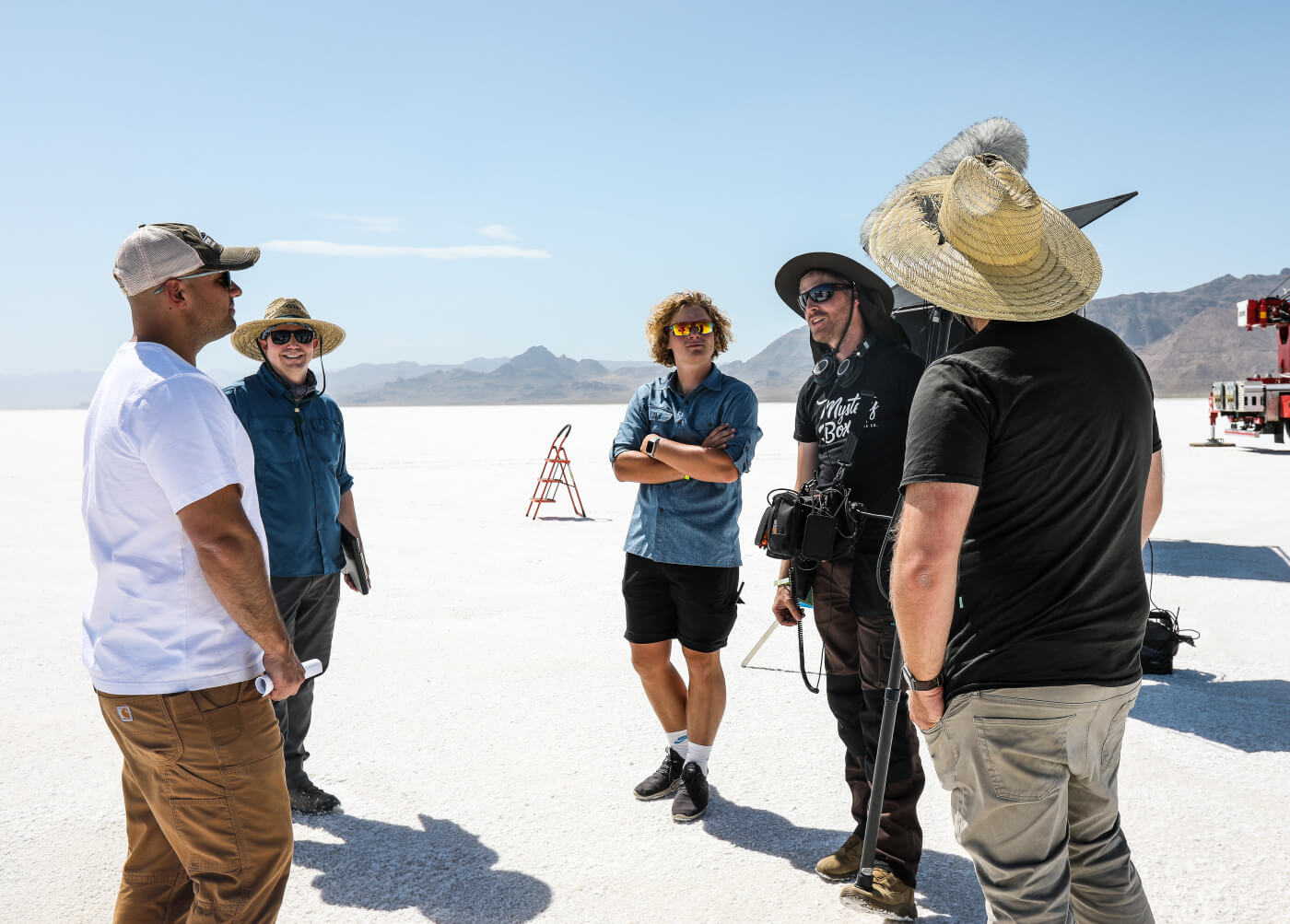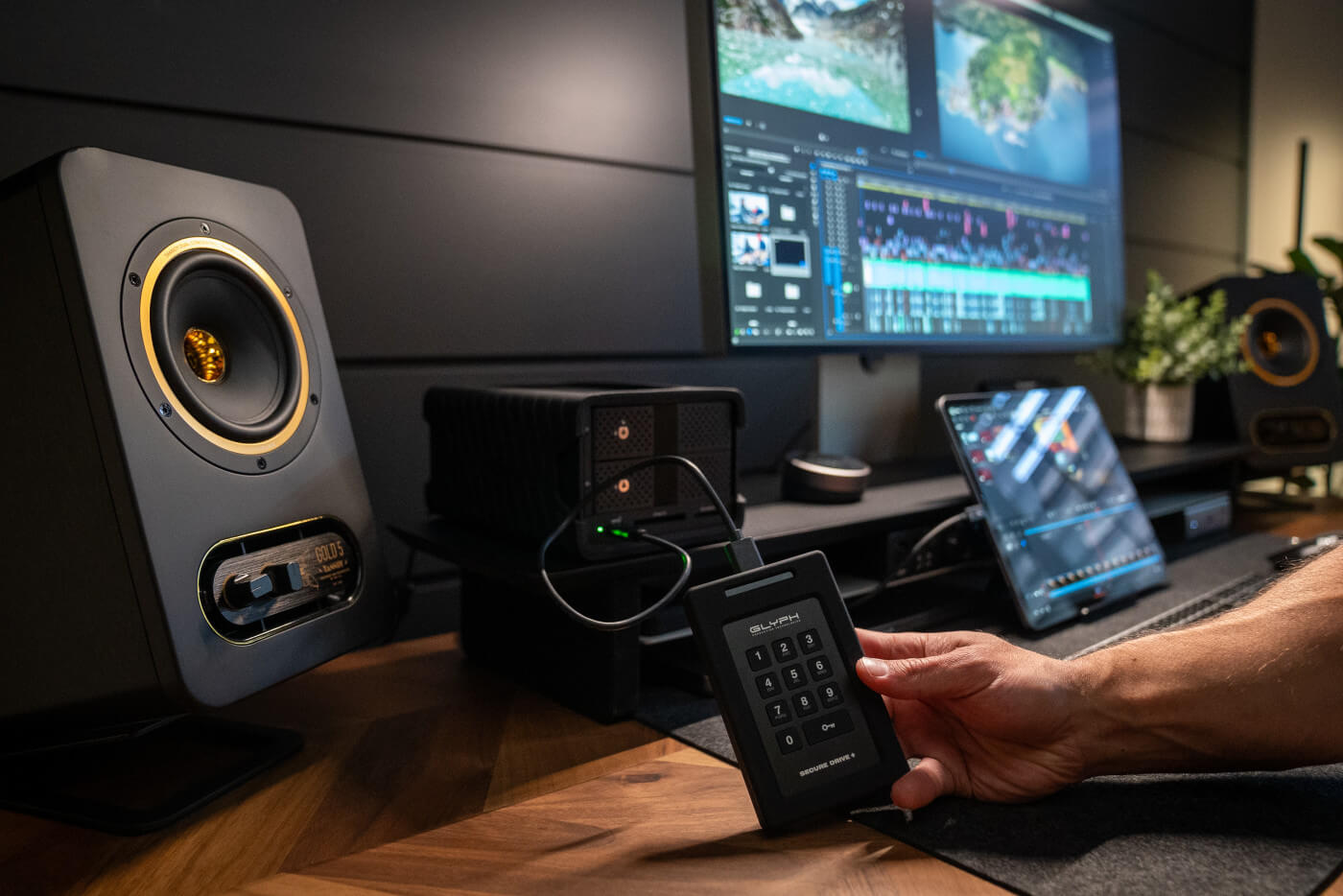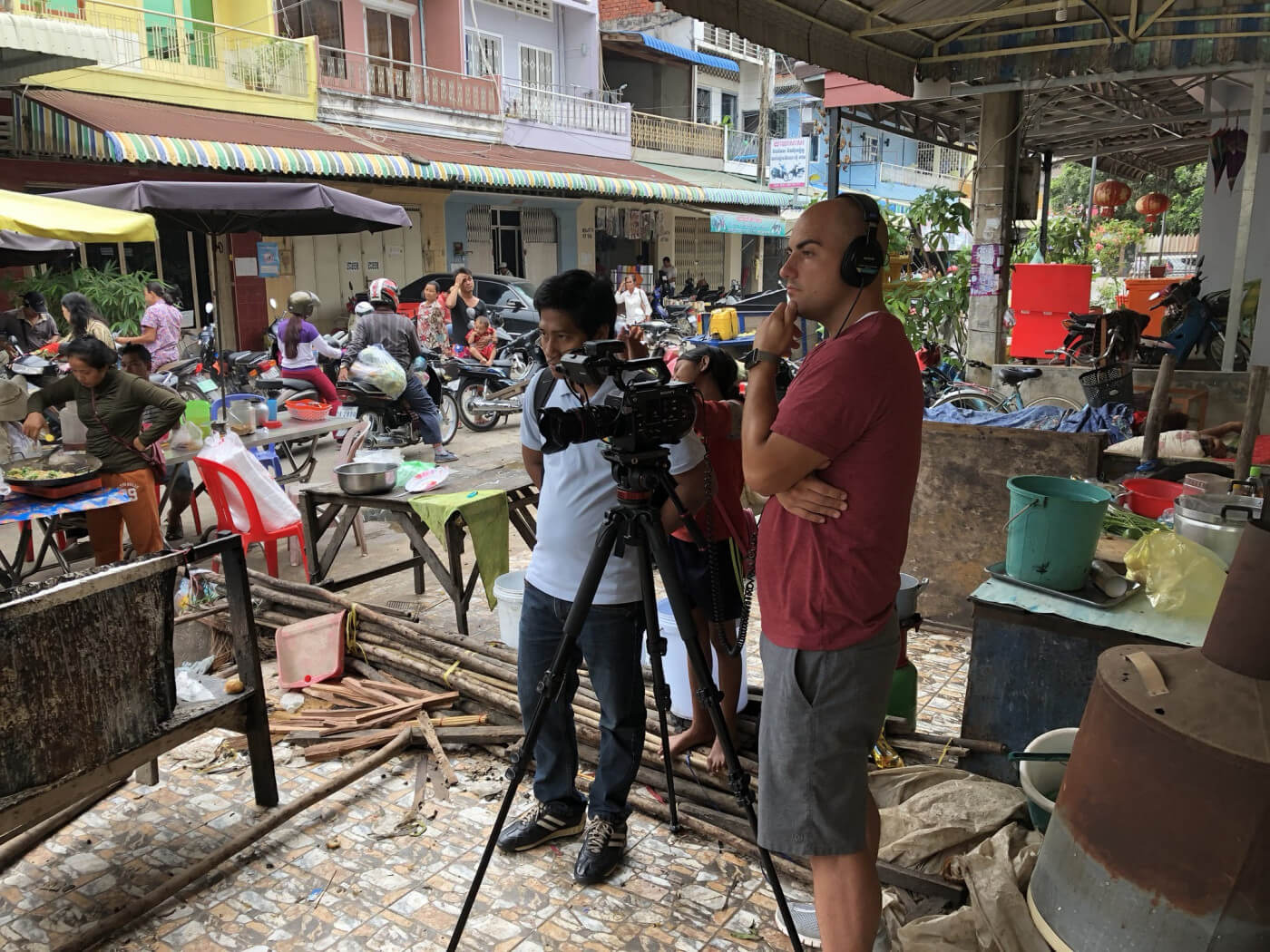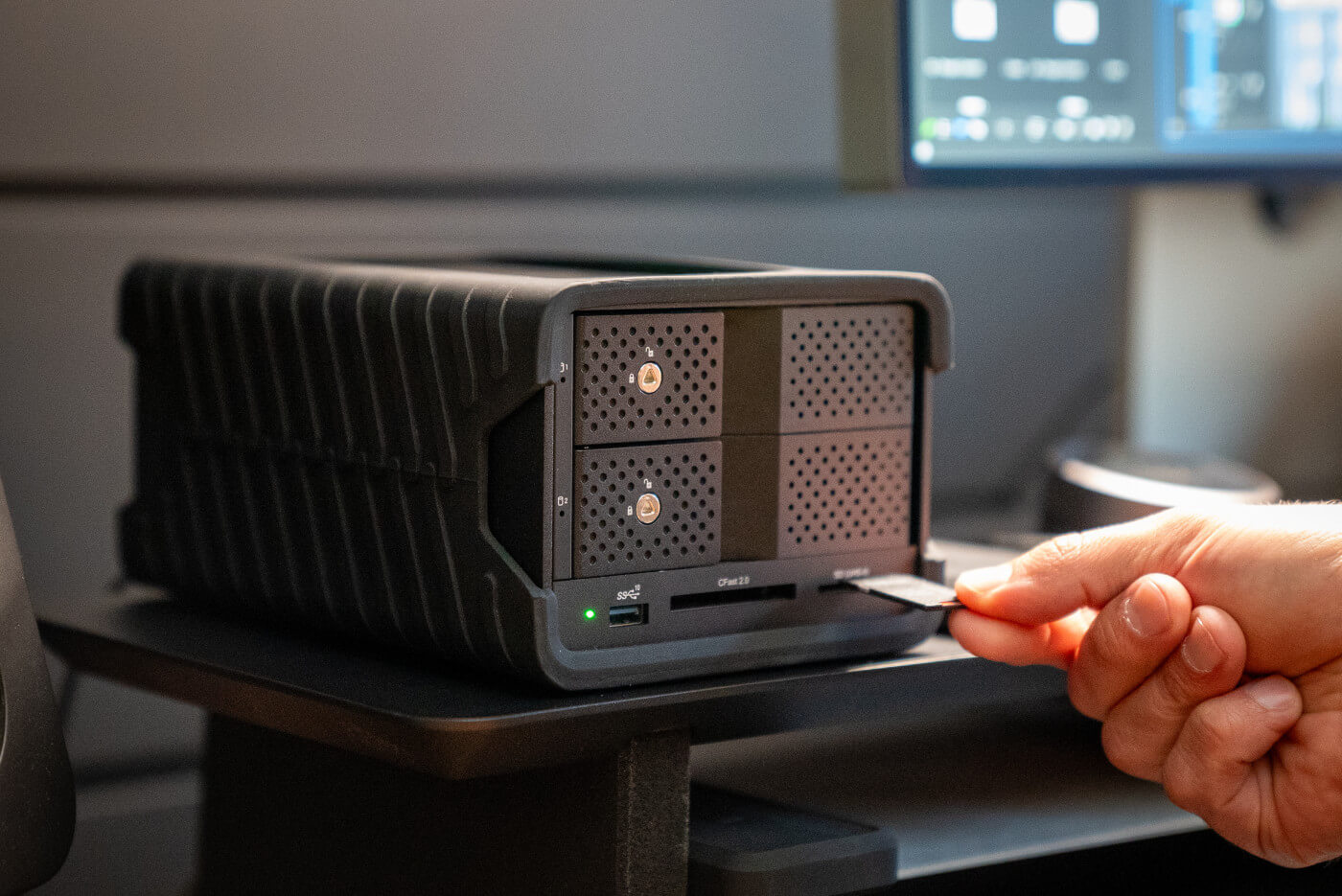Welcome to another exciting edition of our Creator Spotlight series! We had the pleasure of sitting down with post-production aficionado, Jeff Davis. With an impressive career spanning 21 years in the field, Jeff has worked on projects with major brands such as Adidas, Adobe, Domino's, Proctor & Gamble, Lego and more. His expertise has been distributed on renowned media outlets and platforms like BBC, PBS, CNN, and SONY, Amazon Prime and Facebook. Jeff has just launched his brand new online education platform focused on post-production. The course focuses on providing students with the most up-to-date and pertinent skills in the ever-changing landscape of digital media. We had the privilege of interviewing Jeff, where we discussed his personal journey and explored the features of his new course.
Let's jump in! What inspired you to get started on this career path?
In my younger years, two passions quickly took hold of me: the magic of watching movies at drive-in theaters and being a nerd with all things tech. My curiosity was rewarded when I got my hands on a camcorder and the first edition of Final Cut Pro. The journey from making movies to mastering editing tutorials was an exhilarating one. After earning my college degree in digital media, I stepped into the professional world as an assistant editor for a production company, juggling my duties with managing what was then a behemoth of a 4TB XRAID server. This experience was transformative, turning me from a tech nerd into a certified post-production ninja. Our team had the privilege of handling a diverse range of projects, including corporate training materials, broadcast programs, films, documentaries, music videos, and branded content for a wide range of esteemed companies.
However, throughout these years, one constant has been my commitment to post-leadership and education. Nurturing the next generation of creative professionals and being part of their journey has been equally, if not more, rewarding. Through these interactions, I noticed an urgent need for educational content and training that could provide hands-on experience without the necessity of attending traditional film school or sifting through countless hours of mundane YouTube tutorials. This realization eventually led to the birth of Post Pro, a tribute to my belief in the power of practical learning in shaping the future of post-production. So, it's been a journey led by curiosity, fueled by passion, and shaped by a desire to contribute to the field I love so much.

Can you tell us about your earliest influences as well as the people that inspire you today?
One of my earliest and most impactful influences was none other than the visionary Steve Jobs from Apple. I know I sound like an Apple fanboy, but my early fascination with Jobs was not merely about the products he created, but rather his unique approach to technology and creativity. Jobs had a distinct vision for the harmonious blend of these two worlds, breaking down the silos that often separate them. His later involvement with Pixar further piqued my interest, as I was fascinated with behind the scenes methods for 3D creation and how storytelling can transcend any medium. His forward-thinking and ability to anticipate the needs of customer's inspired me to think differently and to push myself to challenge norms.
Later on in my career, when I explored the realm of post-production, I found entertaining content from the After Effects guru, Andrew Kramer. His fusion of educational and humor-infused tutorials had me hooked and was a breath of fresh air after viewing other online tutorials that were tedious, boring, and monotonous. His teaching style and humor has had a profound influence on the type of content I generate today.
If you could go back in time, what advice or insights would you give to your younger self when starting out in post production?
If I had the chance to have a sit-down with my younger self, I would share these four insights, as well as investing in Google, Apple, and Tesla!
- Embrace Change: The world of post-production, like most technology landscapes, is in a state of constant change. New tools, techniques, and trends will emerge continuously. Don't be scared of change; instead, embrace it. Adaptability is a key trait in this field that will make you stand out!
- Lifelong Learning: Never stop learning. Even after 25 years in the field, I still find new things to learn every single day. The moment you think you know it all is the moment you stop growing. Film and post-production is a vast field; there's always room for more knowledge and skills.
- Build Relationships: Networking is important, but building genuine relationships is even more so. The people you work with can become mentors, collaborators, and friends. Foster these relationships and learn from everyone around you. There is a popular phrase that says “It’s all about the people you know”, and I would argue that should be changed to: “It’s all about the people who know you!”
- Follow Your Passion: Finally, let your passion be your guide. There will be challenging times, all-nighters, and tough projects. But, if you genuinely love what you do, it will always be worth it. Film and Post-production is as much an art as it is a science; find something that drives you and that you enjoy. You’ll be glad you did in the future!

From your perspective, what are the top three essential tools or practices that every Digital Imaging Technician (DIT) should have in their arsenal?
- Backup and Data Management Skills: Arguably one of, if not, the most important responsibilities of a DIT is ensuring the integrity of the footage. A DIT must have a foolproof system for data management and backup, with multiple redundancies. This involves not just technical skills in handling data, but also the discipline to adhere strictly to this process, no matter how hectic the production environment.
- Mastery of Industry Standard Software: To operate effectively within a digital workflow, it's essential for a DIT to have proficiency in using industry-standard checksum verification software. Tools such as Hedge, Silverstack, or ShotPut Pro are crucial for data management and backup. Alongside this, a DIT should also be conversant with the latest non-linear editing systems. Familiarity with programs like Da Vinci Resolve, Adobe Premiere, and Final Cut X can enhance your work's efficiency and quality significantly.
- Deep Understanding of Camera Systems: A DIT must be intimately familiar with a wide range of camera systems available, their individual characteristics, and how they handle different shooting conditions. This includes knowledge of various camera settings like resolutions, codecs, color profiles, and how changes can affect the final image. Attending exhibitions like NAB or IBC can significantly enhance your knowledge of cutting-edge camera technology. These events provide a unique opportunity to understand emerging trends and keep pace with the evolution of camera movements. Moreover, seeking out jobs or projects that allow you to work with these new technologies can also help you stay ahead of the curve. It's all about embracing continuous learning and staying proactive in your engagement with the industry's ongoing advancements.

In terms of learning outcomes, what are your expectations or hopes for the students who enroll in your course?
Great question! Our main goal is for our students to be job-ready and capable of contributing to a project from day one. We believe that the right training can empower them to make an immediate impact. We also structured this training with extra modules that discuss how to get paid, what rates to charge as well as a module about troubleshooting the most common issues found with DIT work. As far as a specific skill with this course, we want all our students to come out of this training with an understanding of proper data management skills when it comes to offloading media. There are certain rules to follow when copying data and by not following these rules, the results can be catastrophic! Whether it’s a Hollywood blockbuster film, or your own personal wedding video, data loss can be easily avoided by having a plan and implemented the skills and systems we teach in this training.
How are Glyph drives an integral part of your workflow?
Hard drives have become a bit of an obsession for me. As technology has continued to evolve, I’ve been on a mission to find the highest capacity, fastest, and most dependable equipment possible. It wasn’t until I ran a test of drives several years ago that I noticed that Glyph drives would consistently outperform all SSD’s, even ones from some of the most popular brands. I swapped out all our shuttle and offload drives with these new drives and they were such a hit on production that everyone who came across them ended up ordering them as well!
What I love most about Glyph drives is how I don’t waste any time waiting around for files to transfer or slowing down because of bottlenecks. It almost feels like a cheat code. It's all systems go, all the time. This extra time allows me to focus on what matters most, optimizing workflows, focusing on backups, as well as having a little extra time to grab a coffee.
They have also been integral because they have been proven to be remarkably reliable. In an industry where technical hiccups can spell disaster, the importance of having an unwaveringly reliable drive cannot be overstated. My Glyph drive has been a trusty companion, performing relentlessly even in the face of the most demanding tasks.
Additionally, Glyph's selection of encrypted drives has been lifesaving for projects with confidential or proprietary footage. There's a sense of professional pride when I hand over an encrypted drive to editors or post house, showing them that I'm not just serious about my work, but also about safeguarding the valuable content we create.
Lastly, what part of this course are you particularly excited to discuss?
This is a tough one! I’m particularly thrilled about our overview module where we pull back the curtain into a topic not often discussed: bidding work, getting paid, and determining the rates you should be charging. Here, I share my secrets, methods, and top tips for finding work, plus I offer free downloads and checklists that you can directly apply to your upcoming projects.
The grand finale of this section is one of my all-time favorite videos: 'My Tips For Working On-set.' I vividly recall my own first on-set experience, feeling like a fish out of water, unsure of the protocols and etiquettes. This video light-heartedly yet comprehensively outlines my top tips, offering a fresh perspective that isn't typically covered in conventional training.
You can learn more about Jeff and Post Pro here. Thank you for being a part of our community at Glyph. Know someone who would be a good fit for our Creator Spotlight series? Email us at Community@GlyphTech.com with subject 'Creator Spotlight' and be sure to include a bio and relevant links to their work. See you next time on Creator Spotlight!









